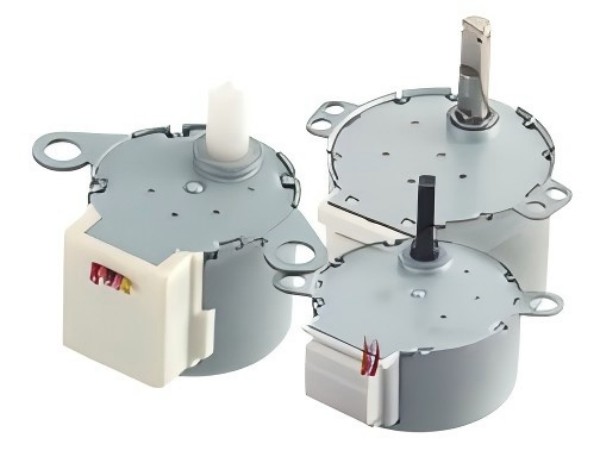When it comes to geared stepper motors, the choice of gear plays a crucial role in determining their performance. The motor’s overall performance, torque production, and efficiency can all be strongly impacted by the type of gear that is employed.
Among the various types of gears available, four types are commonly used in geared stepper motors: worm gears, planetary gears, helical gears, and spur gears. In this article, we will examine these gears in detail to help you understand their Pros, Cons, and how they can best suit different applications.
Understanding Geared Stepper Motors
Geared stepper motors combine the precision of stepper motors with the torque multiplication and mechanical advantage provided by gears. Stepper motors are perfect for situations where control and accuracy are crucial because of their well-known capacity to move in precise, distinct increments.
By integrating gears, the motor can deliver higher torque at lower speeds, which makes it more suitable for applications that require increased mechanical force.

What are the Gear Types?
Each gear type has unique characteristics, and their selection depends on the application requirements. Comparing the four most prevalent kinds is shown below:
1. Worm Gear
Worms, which are screw-shaped gears, and worm wheels, which mesh with the worm, make up a worm gear. The worm gear’s primary feature is its ability to achieve high torque multiplication in a compact design.
| Pros | Cons |
| High ratios of reduction in one step. | Friction reduces efficiency. |
| Compact design, ideal for small spaces. | Generates significant heat during operation. |
| Provides self-locking capability, preventing back-driving. | Limited to low-speed applications. |
| Simple to design for high torque. | Higher wear and tear, requiring more maintenance. |
Best Applications:
Utilized in elevators, winches, and steering systems, among other applications where space is at a premium and strong torque at low speeds is necessary.
2. Planetary Gear
Planetary gears, or epicyclic gears, consist of a central sun gear, one or more planet gears, and a ring gear. This system offers a high torque output with a compact form factor, making it ideal for use in geared stepper motors.
| Pros | Cons |
| High efficiency and power density. | More complex design and assembly. |
| Higher torque capacity than other gear types. | Higher cost compared to simpler gears. |
| Compact and space-efficient design. | May require more precise manufacturing. |
| Excellent for load distribution. | More challenging to repair or replace. |
Best Applications:
Ideal for applications where high torque and compact size are critical, such as robotics, industrial machines, and automatic transmissions.
3. Helical Gear
Smooth engagement and effective torque transfer are provided by helical gears’ teeth, which are cut at an angle to the axis of rotation. High-speed applications frequently make use of these gears.
| Pros | Cons |
| Smooth and quiet operation. | Generates axial loads, requiring additional bearings. |
| High torque capacity compared to spur gears. | More complex design and manufacturing. |
| Can handle higher speeds and loads. | Higher cost due to precision engineering. |
| Ideal for high-speed applications. | Requires lubrication for efficient operation. |
Best Applications:
Used in high-speed applications where smooth operation and high torque are required, such as in conveyors, industrial machines, and automotive systems.
4. Spur Gear
The simplest and most prevalent kind of gear is a spur gear. They connect with one another directly and have straight teeth. These gears are widely used due to their simplicity and cost-effectiveness.
| Pros | Cons |
| Easy to build and with a simple design. | Can be noisy due to abrupt engagement of teeth. |
| Reliable and cost-effective. | Less efficient at transmitting high torque. |
| Excellent for situations requiring high speed. | Not ideal for use in compact or limited spaces. |
| Easy to repair and replace. | Limited torque handling capability compared to other gears. |
Best Applications:
Utilized in devices like clocks, small appliances, and simple machinery, where affordability and ease of use are crucial.
Comparison Table: Gear Types for Geared Stepper Motors
| Property | Worm Gear | Planetary Gear | Helical Gear | Spur Gear |
| Torque Output | High | Very High | High | Moderate |
| Efficiency | Low | High | High | High |
| Noise Level | Moderate | Low | Low | High |
| Compactness | High | Compact | Moderate | Simple |
| Best Application | Low-speed, high-torque applications | Robotics, industrial machines | High-speed, high-torque applications | General-purpose, low-cost applications |
Which Gear Is Best for Geared Stepper Motors?
The application’s particular needs determine which gear is suitable for a geared stepper motor. Here’s a breakdown:
- For High Torque at Low Speed: Worm gears are the best option due to their high reduction ratios and compact size. They do, however, work best in situations where the motor does not have to back-drive.
- For High Efficiency and Compactness: Planetary gears are the preferred choice, offering high efficiency, compactness, and high torque output, making them ideal for applications like robotics and industrial machinery.
- High Torque at larger Speeds and Smooth Operation: Helical gears are perfect for applications that need to be able to manage larger loads and speeds while also operating quietly and smoothly.
- For Simple, Cost-Effective Applications: Spur gears are the best option when simplicity and cost-effectiveness are paramount, though they may not be suitable for high-torque applications.
Conclusion
Choosing the right gear type for geared stepper motors is essential for optimal performance. Each gear type has unique advantages, so it’s important to match the gear to your specific needs.
Worm gears are ideal for high-torque, low-speed tasks, planetary gears work well for efficient, compact designs, helical gears suit high-speed applications, and spur gears are cost-effective for general use.

